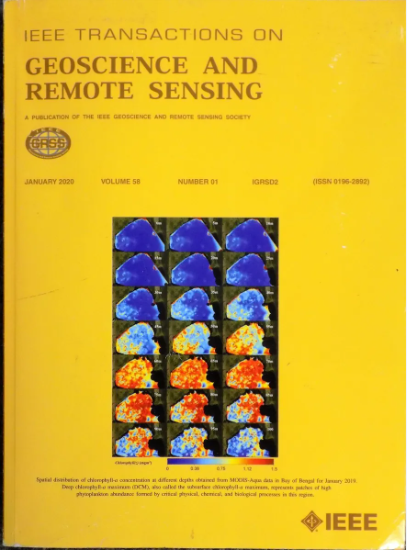多任务学习驱动的物理引导深度学习磁暴反演
IF 7.5
1区 地球科学
Q1 ENGINEERING, ELECTRICAL & ELECTRONIC
IEEE Transactions on Geoscience and Remote Sensing
Pub Date : 2024-09-11
DOI:10.1109/TGRS.2024.3457893
引用次数: 0
摘要
将涉及波传播物理规律的前向建模纳入网络架构以提高深度学习(DL)反演方法的泛化能力是一种持续的趋势,已展现出广阔的应用前景。然而,直接嵌入由传统数值算法求解的耗时的二维磁电(MT)前向建模以促进物理引导的 DL MT 反演(通常需要在完整的训练过程中进行数百万次前向操作)具有挑战性。因此,在这项工作中,我们通过构建 W 型 DL 模型和执行多任务学习策略,开发了一种物理引导 DL 反演方法(PGWNet)。DL 模型由一个编码器和两个解码器组成,其中两个解码器相互独立并共享编码器。在训练过程中,首先对两个解码器进行独立优化,分别最小化模型误差(量化预测的电阻率模型与标注的电阻率模型之间的差异)和数据误差(量化预测的 MT 响应与标注的 MT 响应之间的差异)。当模型误差和数据误差反向传播到编码器时,它们将结合起来共同优化编码器。此外,为确保实际应用效果,本研究还建立了一组电阻率值逐渐变化的随机合成电阻率模型,以刻画真实的地下结构。我们利用合成和实际 MT 数据证实了所开发的 PGWNet 反演方法,并将其与完全数据驱动的 DL 反演方法和传统的最小二乘正则化反演方法进行了比较。预计这将促进 DL 反演方法在实际 MT 勘探场景中的实用性和适用性。本文章由计算机程序翻译,如有差异,请以英文原文为准。
Multitask Learning-Driven Physics-Guided Deep Learning Magnetotelluric Inversion
An ongoing trend seeking to incorporate forward modeling, which involves the physical laws of wave propagation, into the network architecture to improve the generalization capability of the deep learning (DL) inversion method has showcased promising applications. However, directly embedding the time-consuming 2-D magnetotelluric (MT) forward modeling solved by conventional numerical algorithms to facilitate physics-guided DL MT inversion, which usually necessitates millions of forward operations during a complete training session, is challenging. Hence, in this work, we develop a physics-guided DL inversion method (PGWNet) by constructing a W-shaped DL model and performing a multitask learning strategy. The DL model consists of one encoder and two decoders, where the two decoders are independent of each other and share the encoder. During the training process, two decoders are first optimized independently by minimizing the model misfit, quantifying the discrepancy between the predicted and labeled resistivity models, and the data misfit, quantifying the discrepancy between the predicted and labeled MT responses, respectively. When model and data misfits backpropagate to the encoder, they are combined to jointly optimize the encoder. Moreover, to ensure practical application effect, this work builds a set of random synthetic resistivity models with gradually varying resistivity values to delineate realistic subsurface structures. We substantiate the developed PGWNet inversion method using synthetic and actual MT data and benchmark it against a fully data-driven DL inversion method and the conventional least-squares regularization inversion method. It is anticipated to promote the practicability and applicability of the DL inversion method in practical MT prospecting scenarios.
求助全文
通过发布文献求助,成功后即可免费获取论文全文。
去求助
来源期刊

IEEE Transactions on Geoscience and Remote Sensing
工程技术-地球化学与地球物理
CiteScore
11.50
自引率
28.00%
发文量
1912
审稿时长
4.0 months
期刊介绍:
IEEE Transactions on Geoscience and Remote Sensing (TGRS) is a monthly publication that focuses on the theory, concepts, and techniques of science and engineering as applied to sensing the land, oceans, atmosphere, and space; and the processing, interpretation, and dissemination of this information.
 求助内容:
求助内容: 应助结果提醒方式:
应助结果提醒方式:


